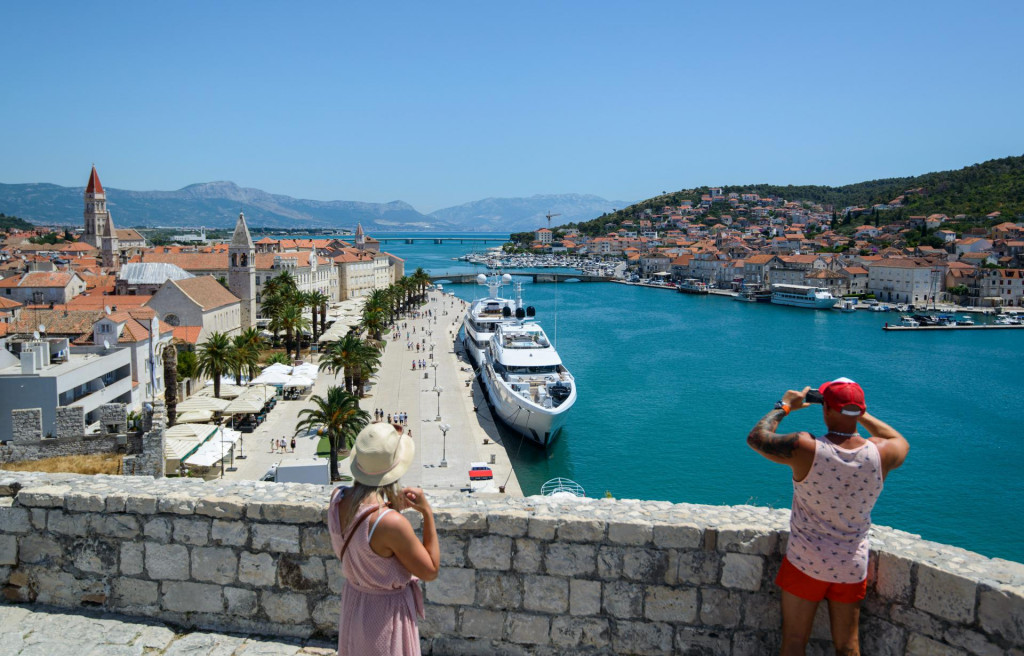Trogir can today be comfortably reached by land, air and sea. These advantages are secured by the Dalmatina highway, Split Airport and the proximity of the sea which encircles it.
Situated on a small island between land and Čiovo, connected to both by bridges, dr. Ivo Babić described Trogir as "a town of miniature dimensions and appearance” that “gives the impression of a large castle on water”.
Testimonies of an extremely rich history – dating back from before Christ – have been preserved to the present day and are exhibited in the Town Museum in the old part called Garagnin – in Fanfogna Palace. The old part of the town has been on the prestigious UNESCO list of World Cultural Heritage since 1997.
A valuable feature of Trogir is the fact that its inhabitants, together with their guests, use buildings built in the 13th or 14th century for everyday needs, otherwise protected cultural property, and thus increasing the popularity of heritage hotels that take guests back to the Middle Ages, along with the hidden technology of the 21st century. Restaurants, taverns, coffee shops, all in stone houses and often outddoor with a view of Čiovo and the luxurious anchored yachts to whom it is a favorite destination.
The fertile Trogir fields that once used to feed the small number of inhabitants today it enriches its offer of a picturesque typical Mediterranean market, which as a rule does not promote even to tourists.
Numerous events, concerts, exhibitions organized during the Trogir Cultural Summer are also intended for locals and tourists.
One of the summer stages is the well-known fortress Kamerlengo, built in the Venetian period as defense for the town.
Among the ten preserved churches, the best known is the cathedral of St. Lawrence with a 47-meter high bell tower that offers a wonderful view of Trogir and its outskirts. The best refreshments in the hot summer days is to look for the pebble stone modernly equipped beaches.





